The Offshore Wind Turbines market is expected to grow from USD 14.16 billion in 2020 and to reach USD 53.22 billion by 2028, growing at a CAGR of 18% during the forecast period 2021-2028.
The offshore wind turbines are very vulnerable to environmental externalities. The turbines harness the wind energy and transform it into electricity. The offshore wind turbine market gives a plethora of offerings which include material expertise, welding solutions, coatings and resurfacing, design modeling of the wind turbine facility, installing sensors for ordinary monitoring, and undertaking inspections to the sites.
The factors driving the market are growth in the projects to reduce carbon footprints, overpower structures and to decrease air pollution, and contributing to the pool of energy through renewables. The factors restraining the market growth are the adoption of clean energy supplies like solar and different alternatives and excessive capitals expenditures associated with substructure and installation expenses. Technological improvements inclusive of increased capacity of wind turbines, floating wind turbines, and 3D printing will provide market growth opportunities.
This study delivers a comprehensive analysis of Water depth, Installation, Turbine capacity, and region. The Water depth segment includes Shallow Water, Transitional Water, and Deep Water. The Shallow Water segment held the largest market share, owing to their areas that are ideal for constructing the inspiration for wind towers. The Installation segment includes Fixed and Floating. The Fixed segment holds the largest market share, owing to the numerous benefits provided by constant installations over floating installations. The Turbine capacity segment includes Up to 3 MW, 3 MW to 5 MW, and > 5 MW. The3 MW to 5 MW holds the largest market share, owing to the excessive strength generation capacity of those turbines.
The market has been divided into North America, Europe, Asia-Pacific, Middle East & Africa, and South America. Europe holds the largest market share owing to the significant demand for easy strength technology in the region. Considering the Asian nations, there would be rising demand for the turbines in Taiwan, South Korea, Japan, and Vietnam. India is anticipated to be the rising united states of America to harness almost all forms of renewable strength given the various set of resources it has by earmarking about 70GW of offshore wind strength development.
Some of the notable players in the market are Vestas Wind Systems A/S, Siemens Gamesa Renewable Energy SA, General Electric Company, Nordex SE, Senvion SA, Suzlon Energy Ltd, Xinjiang Goldwind Science & Technology Co. Ltd., Guodian United Power Technology Company Limited. In December 2019, Orsted A/S signed a 10-yr index-constant price agreement for Borkum Riffgrund 3 offshore wind farm with Covestro AG, a supplier of high-performance polymer materials.
Offshore Wind Turbines Market Analysis and Forecast, Water depth
Offshore Wind Turbines Market Analysis and Forecast, Installation
Offshore Wind Turbines Market Analysis and Forecast, Turbine capacity
Offshore Wind Turbines Market Analysis and Forecast, Region
Report Description:
1. Introduction
1.1. Objectives of the Study
1.2. Market Definition
1.3. Research Scope
1.4. Currency
1.5. Key Target Audience
2. Research Methodology and Assumptions
3. Executive Summary
4. Premium Insights
4.1. Porter’s Five Forces Analysis
4.2. Value Chain Analysis
4.3. Top Investment Pockets
4.3.1. Market Attractiveness Analysis By Water depth
4.3.2. Market Attractiveness Analysis By Installation
4.3.3. Market Attractiveness Analysis By Turbine capacity
4.3.4. Market Attractiveness Analysis By Region
4.4. Industry Trends
5. Market Dynamics
5.1. Market Evaluation
5.2. Drivers
5.2.1. Growth in the projects to reduce carbon footprints over power structures and decreasing air pollution.
5.2.2. Contributing to the pool of energy through renewables
5.3. Restrains
5.3.1. Adoption of clean energy supply like solar and different alternatives
5.3.2. Excessive capitals expenditures associated with substructure and installation expenses
5.4. Opportunities
5.4.1. Technological improvements inclusive of increased-capacity
6. Global Offshore Wind Turbines Market Analysis and Forecast, By Water depth
6.1. Segment Overview
6.2. Shallow Water
6.3. Transitional Water
6.4. Deep Water
7. Global Offshore Wind Turbines Market Analysis and Forecast, By Installation
7.1. Segment Overview
7.2. Fixed
7.3. Floating
8. Global Offshore Wind Turbines Market Analysis and Forecast, By Turbine capacity
8.1. Segment Overview
8.2. Up to 3 MW
8.3. 3 MW to 5 MW
8.4. > 5 MW
9. Global Offshore Wind Turbines Market Analysis and Forecast, By Regional Analysis
9.1. Segment Overview
9.2. North America
9.2.1. U.S.
9.2.2. Canada
9.2.3. Mexico
9.3. Europe
9.3.1. Germany
9.3.2. France
9.3.3. U.K.
9.3.4. Italy
9.3.5. Spain
9.4. Asia-Pacific
9.4.1. Japan
9.4.2. China
9.4.3. India
9.5. South America
9.5.1. Brazil
9.6. Middle East and Africa
9.6.1. UAE
9.6.2. South Africa
10. Global Offshore Wind Turbines Market-Competitive Landscape
10.1. Overview
10.2. Market Share of Key Players in Global Offshore Wind Turbines Market
10.2.1. Global Company Market Share
10.2.2. North America Company Market Share
10.2.3. Europe Company Market Share
10.2.4. APAC Company Market Share
10.3. Competitive Situations and Trends
10.3.1. Installation Launches and Developments
10.3.2. Partnerships, Collaborations, and Agreements
10.3.3. Mergers & Acquisitions
10.3.4. Expansions
11. Company Profiles
11.1. Vestas Wind Systems A/S
11.1.1. Business Overview
11.1.2. Company Snapshot
11.1.3. Company Market Share Analysis
11.1.4. Company Installation Portfolio
11.1.5. Recent Developments
11.1.6. SWOT Analysis
11.2. Siemens Gamesa Renewable Energy SA
11.2.1. Business Overview
11.2.2. Company Snapshot
11.2.3. Company Market Share Analysis
11.2.4. Company Installation Portfolio
11.2.5. Recent Developments
11.2.6. SWOT Analysis
11.3. General Electric Company
11.3.1. Business Overview
11.3.2. Company Snapshot
11.3.3. Company Market Share Analysis
11.3.4. Company Installation Portfolio
11.3.5. Recent Developments
11.3.6. SWOT Analysis
11.4. Nordex SE,Senvion SA
11.4.1. Business Overview
11.4.2. Company Snapshot
11.4.3. Company Market Share Analysis
11.4.4. Company Installation Portfolio
11.4.5. Recent Developments
11.4.6. SWOT Analysis
11.5. Suzlon Energy Ltd
11.5.1. Business Overview
11.5.2. Company Snapshot
11.5.3. Company Market Share Analysis
11.5.4. Company Installation Portfolio
11.5.5. Recent Developments
11.5.6. SWOT Analysis
11.6. Xinjiang Goldwind Science & Technology Co. Ltd.
11.6.1. Business Overview
11.6.2. Company Snapshot
11.6.3. Company Market Share Analysis
11.6.4. Company Installation Portfolio
11.6.5. Recent Developments
11.6.6. SWOT Analysis
11.7. Guodian United Power Technology Company Limited
11.7.1. Business Overview
11.7.2. Company Snapshot
11.7.3. Company Market Share Analysis
11.7.4. Company Installation Portfolio
11.7.5. Recent Developments
11.7.6. SWOT Analysis
List of Table
1. Global Offshore Wind Turbines Market, By Water depth, 2018-2028(USD Billion)
2. Global Shallow Water, Offshore Wind Turbines Market, By Region, 2018-2028(USD Billion)
3. Global Transitional Water, Offshore Wind Turbines Market, By Region, 2018-2028(USD Billion)
4. Global Deep Water, Offshore Wind Turbines Market, By Region, 2018-2028(USD Billion)
5. Global Offshore Wind Turbines Market, By Turbine capacity, 2018-2028(USD Billion)
6. Global Up to 3 MW, Offshore Wind Turbines Market, By Region, 2018-2028(USD Billion)
7. Global 3 MW to 5 MW, Offshore Wind Turbines Market, By Region, 2018-2028(USD Billion)
8. Global > 5 MW, Offshore Wind Turbines Market, By Region, 2018-2028(USD Billion)
9. Global Offshore Wind Turbines Market, By Installation, 2018-2028(USD Billion)
10. Global Fixed, Offshore Wind Turbines Market, By Region, 2018-2028(USD Billion)
11. Global Floating, Offshore Wind Turbines Market, By Region, 2018-2028(USD Billion)
12. North America Offshore Wind Turbines Market, By Water depth, 2018-2028(USD Billion)
13. North America Offshore Wind Turbines Market, By Turbine capacity, 2018-2028(USD Billion)
14. North America Offshore Wind Turbines Market, By Installation, 2018-2028(USD Billion)
15. U.S. Offshore Wind Turbines Market, By Water depth, 2018-2028(USD Billion)
16. U.S. Offshore Wind Turbines Market, By Turbine capacity, 2018-2028(USD Billion)
17. U.S. Offshore Wind Turbines Market, By Power Installation, 2018-2028(USD Billion)
18. Canada Offshore Wind Turbines Market, By Water depth, 2018-2028(USD Billion)
19. Canada Offshore Wind Turbines Market, By Turbine capacity, 2018-2028(USD Billion)
20. Canada Offshore Wind Turbines Market, By Installation, 2018-2028(USD Billion)
21. Mexico Offshore Wind Turbines Market, By Water depth, 2018-2028(USD Billion)
22. Mexico Offshore Wind Turbines Market, By Turbine capacity, 2018-2028(USD Billion)
23. Mexico Offshore Wind Turbines Market, By Installation, 2018-2028(USD Billion)
24. Europe Offshore Wind Turbines Market, By Water depth, 2018-2028(USD Billion)
25. Europe Offshore Wind Turbines Market, By Turbine capacity, 2018-2028(USD Billion)
26. Europe Offshore Wind Turbines Market, By Installation, 2018-2028(USD Billion)
27. Germany Offshore Wind Turbines Market, By Water depth, 2018-2028(USD Billion)
28. Germany Offshore Wind Turbines Market, By Turbine capacity, 2018-2028(USD Billion)
29. Germany Offshore Wind Turbines Market, By Installation, 2018-2028(USD Billion)
30. France Offshore Wind Turbines Market, By Water depth, 2018-2028(USD Billion)
31. France Offshore Wind Turbines Market, By Turbine capacity, 2018-2028(USD Billion)
32. France Offshore Wind Turbines Market, By Installation, 2018-2028(USD Billion)
33. U.K. Offshore Wind Turbines Market, By Water depth, 2018-2028(USD Billion)
34. U.K. Offshore Wind Turbines Market, By Turbine capacity, 2018-2028(USD Billion)
35. U.K. Offshore Wind Turbines Market, By Installation, 2018-2028(USD Billion)
36. Italy Offshore Wind Turbines Market, By Water depth, 2018-2028(USD Billion)
37. Italy Offshore Wind Turbines Market, By Turbine capacity, 2018-2028(USD Billion)
38. Italy Offshore Wind Turbines Market, By Installation, 2018-2028(USD Billion)
39. Spain Offshore Wind Turbines Market, By Water depth, 2018-2028(USD Billion)
40. Spain Offshore Wind Turbines Market, By Turbine capacity, 2018-2028(USD Billion)
41. Spain Offshore Wind Turbines Market, By Installation, 2018-2028(USD Billion)
42. Asia Pacific Offshore Wind Turbines Market, By Water depth, 2018-2028(USD Billion)
43. Asia Pacific Offshore Wind Turbines Market, By Turbine capacity, 2018-2028(USD Billion)
44. Asia Pacific Offshore Wind Turbines Market, By Installation, 2018-2028(USD Billion)
45. Japan Offshore Wind Turbines Market, By Water depth, 2018-2028(USD Billion)
46. Japan Offshore Wind Turbines Market, By Turbine capacity, 2018-2028(USD Billion)
47. Japan Offshore Wind Turbines Market, By Installation, 2018-2028(USD Billion)
48. China Offshore Wind Turbines Market, By Water depth, 2018-2028(USD Billion)
49. China Offshore Wind Turbines Market, By Turbine capacity, 2018-2028(USD Billion)
50. China Offshore Wind Turbines Market, By Installation, 2018-2028(USD Billion)
51. India Offshore Wind Turbines Market, By Water depth, 2018-2028(USD Billion)
52. India Offshore Wind Turbines Market, By Turbine capacity, 2018-2028(USD Billion)
53. India Offshore Wind Turbines Market, By Installation, 2018-2028(USD Billion)
54. South America Offshore Wind Turbines Market, By Water depth, 2018-2028(USD Billion)
55. South America Offshore Wind Turbines Market, By Turbine capacity, 2018-2028(USD Billion)
56. South America Offshore Wind Turbines Market, By Installation, 2018-2028(USD Billion)
57. Brazil Offshore Wind Turbines Market, By Water depth, 2018-2028(USD Billion)
58. Brazil Offshore Wind Turbines Market, By Turbine capacity, 2018-2028(USD Billion)
59. Brazil Offshore Wind Turbines Market, By Installation, 2018-2028(USD Billion)
60. Middle East and Africa Offshore Wind Turbines Market, By Water depth, 2018-2028(USD Billion)
61. Middle East and Africa Offshore Wind Turbines Market, By Turbine capacity, 2018-2028(USD Billion)
62. Middle East and Africa Offshore Wind Turbines Market, By Installation, 2018-2028(USD Billion)
63. UAE Offshore Wind Turbines Market, By Water depth, 2018-2028(USD Billion)
64. UAE Offshore Wind Turbines Market, By Turbine capacity, 2018-2028(USD Billion)
65. UAE Offshore Wind Turbines Market, By Installation, 2018-2028(USD Billion)
66. South Africa Offshore Wind Turbines Market, By Water depth, 2018-2028(USD Billion)
67. South Africa Offshore Wind Turbines Market, By Turbine capacity, 2018-2028(USD Billion)
68. South Africa Offshore Wind Turbines Market, By Installation, 2018-2028(USD Billion)
List of Figures
1. Global Offshore Wind Turbines Market Segmentation
2. Global Offshore Wind Turbines Market: Research Methodology
3. Market Size Estimation Methodology: Bottom-Up Approach
4. Market Size Estimation Methodology: Top-Down Approach
5. Data Triangulation
6. Porter’s Five Forces Analysis
7. Value Chain Analysis
8. Global Offshore Wind Turbines Market Attractiveness Analysis By Water depth
9. Global Offshore Wind Turbines Market Attractiveness Analysis By Turbine capacity
10. Global Offshore Wind Turbines Market Attractiveness Analysis By Installation
11. Global Offshore Wind Turbines Market Attractiveness Analysis By Region
12. Global Offshore Wind Turbines Market: Dynamics
13. Global Offshore Wind Turbines Market Share by Water depth (2021 & 2028)
14. Global Offshore Wind Turbines Market Share by Turbine capacity (2021 & 2028)
15. Global Offshore Wind Turbines Market Share by Installation (2021 & 2028)
16. Global Offshore Wind Turbines Market Share by Regions (2021 & 2028)
17. Global Offshore Wind Turbines Market Share by Company (2020)
Market research is a method of gathering, assessing and deducing data & information about a particular market. Market research is very crucial in these days. The techniques analyze about how a product/service can be offered to the market to its end-customers, observe the impact of that product/service based on the past customer experiences, and cater their needs and demands. Owing to the successful business ventures, accurate, relevant and thorough information is the base for all the organizations because market research report/study offers specific market related data & information about the industry growth prospects, perspective of the existing customers, and the overall market scenario prevailed in past, ongoing present and developing future. It allows the stakeholders and investors to determine the probability of a business before committing substantial resources to the venture. Market research helps in solving the marketing issues challenges that a business will most likely face.
Market research is valuable because of the following reasons:
Our research report features both the aspects; qualitative and quantitative. Qualitative part provides insights about the market driving forces, potential opportunities, customer’s demands and requirement which in turn help the companies to come up with new strategies in order to survive in the long run competition. The quantitative segment offers the most credible information related to the industry. Based on the data gathering, we use to derive the market size and estimate their future growth prospects on the basis of global, region and country.
Our market research process involves with the four specific stages.

Data Collection: This stage of the market research process involves with the gathering and collecting of the market/industry related data from the sources. There are basically two types of research methods:
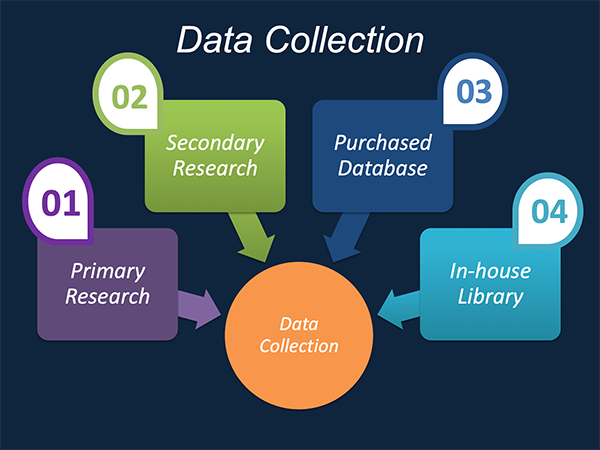
Data Synthesis: This stage includes the evaluation and assessment of all the data acquired from the primary and secondary research. It likewise includes in evaluating the information for any disparity watched while information gathering identified with the market. The data & information is gathered with consideration to the heterogeneity of sources. Scientific and statistical methods are implemented for synthesizing dissimilar information sets and provide the relevant data which is fundamental for formulating strategies. Our organization has broad involvement with information amalgamation where the information goes through different stages:


Market Formulation & Deduction: The last stage includes assigning the data & information in a suitable way in order to derive market size. Analyst reviews and domain based opinions based on holistic approach of market estimation combined with industry investigation additionally features a crucial role in this stage.
This stage includes with the finalization of the market size and numbers that we have gathered from primary and secondary research. With the data & information addition, we ensure that there is no gap in the market information. Market trend analysis is finished by our analysts by utilizing data extrapolation procedures, which give the most ideal figures to the market.
Data Validation: Validation is the most crucial step in the process. Validation & re-validation through scientifically designed technique and process that helps us finalize data-points to be used for final calculations. This stage also involves with the data triangulation process. Data triangulation generally implicates the cross validation and matching the data which has been collected from primary and secondary research methods.





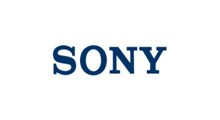

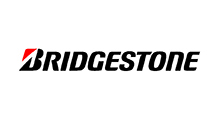

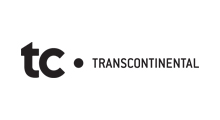















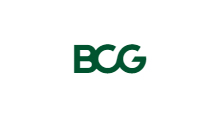




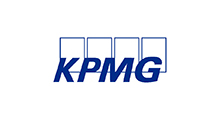
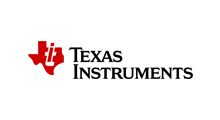



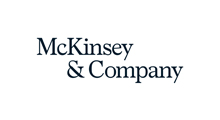

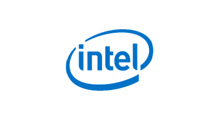







Free Customization
Countries can be added on demand
Free yearly update on purchase of Multi/Corporate User License
Companies served till date

We serve our customers 24x7 for 365 days through calls, emails and live chat options.

Huge database of exceptional market reports bringing market intelligence to your fingertips.

SSL enabled, we offer you various secured payment options for risk free purchase.